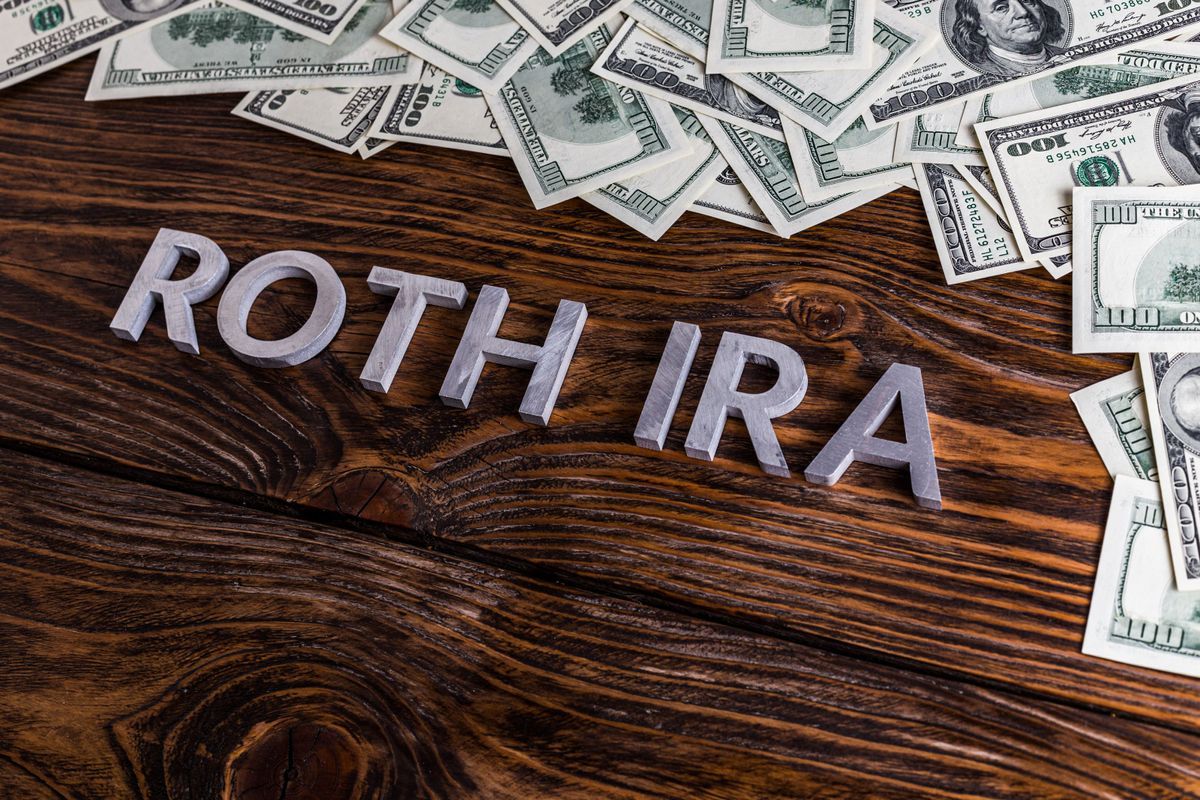

What is a Roth IRA and should you open one? This question often arises when individuals explore retirement savings options. Let’s learn more about this topic below with Monkey Mart. A Roth IRA is a popular retirement account that offers unique tax advantages and flexibility for savers. Understanding its benefits and potential drawbacks can help you make an informed decision about whether it’s the right choice for your financial future.
A Roth IRA is an individual retirement account that allows you to save money for retirement on an after-tax basis. Unlike traditional IRAs, contributions to a Roth IRA are made with money you’ve already paid taxes on. The key benefit of a Roth IRA is that your investments grow tax-free, and you can withdraw your contributions and earnings without paying additional taxes in retirement, provided you meet certain conditions.
Roth IRAs were introduced in 1997 as part of the Taxpayer Relief Act, named after Senator William Roth of Delaware. They were designed to provide an alternative to traditional IRAs and offer more flexibility for retirement savers. The primary appeal of Roth IRAs lies in their tax treatment: while you don’t get an upfront tax deduction for your contributions, you enjoy tax-free growth and withdrawals in retirement.
One of the most significant advantages of a Roth IRA is its flexibility. Unlike traditional IRAs or 401(k)s, Roth IRAs don’t have required minimum distributions (RMDs) during the account owner’s lifetime. This means you can leave your money in the account to grow tax-free for as long as you want, making it an excellent vehicle for passing wealth to your heirs.
Read more: How to Save Money on Groceries Without Using Coupons
While Roth IRAs offer attractive benefits, not everyone is eligible to contribute. The IRS imposes income limits that determine whether you can contribute to a Roth IRA and how much you can contribute. These limits are adjusted annually for inflation.
For 2023, single filers with a modified adjusted gross income (MAGI) below $138,000 can contribute the full amount to a Roth IRA. The contribution limit begins to phase out for incomes between $138,000 and $153,000, and individuals earning $153,000 or more are ineligible to contribute. For married couples filing jointly, the full contribution is allowed for incomes below $218,000, with a phase-out range between $218,000 and $228,000.
The maximum contribution limit for 2023 is $6,500 for individuals under 50 years old and $7,500 for those 50 and older, thanks to a catch-up contribution allowance. It’s important to note that these limits apply to the total contributions across all your IRA accounts, including both traditional and Roth IRAs.
If your income exceeds the Roth IRA contribution limits, you may still be able to benefit from this account type through a strategy known as a “backdoor Roth IRA.” This involves making non-deductible contributions to a traditional IRA and then converting it to a Roth IRA. While this strategy can be effective, it’s important to consult with a financial advisor or tax professional to understand the potential tax implications and ensure you’re following all IRS rules and regulations.
The tax treatment of Roth IRAs is one of their most attractive features. While contributions are made with after-tax dollars, meaning you don’t get an immediate tax deduction, the long-term tax benefits can be substantial. All earnings in your Roth IRA grow tax-free, and qualified withdrawals in retirement are also tax-free. This can be particularly advantageous if you expect to be in a higher tax bracket in retirement or if you believe tax rates will increase in the future.
Roth IRAs also offer more flexibility when it comes to withdrawals compared to traditional IRAs. You can withdraw your contributions (but not earnings) at any time without penalty or taxes. This feature can provide a safety net in case of financial emergencies, although it’s generally advisable to avoid tapping into your retirement savings if possible.
For earnings withdrawals to be considered qualified and therefore tax-free and penalty-free, you must meet two conditions: the account must be at least five years old, and you must be at least 59½ years old. There are exceptions to these rules for certain situations, such as first-time home purchases, higher education expenses, or if you become disabled.
When deciding between a Roth IRA and a traditional IRA, it’s essential to consider your current tax situation and your expectations for the future. Traditional IRAs offer an upfront tax deduction on contributions, but withdrawals in retirement are taxed as ordinary income. Roth IRAs, on the other hand, offer no immediate tax benefit but provide tax-free withdrawals in retirement.
If you’re currently in a low tax bracket and expect to be in a higher bracket in retirement, a Roth IRA might be more beneficial. Conversely, if you’re in a high tax bracket now and expect to be in a lower bracket in retirement, a traditional IRA might be more advantageous. Many financial experts recommend having a mix of both Roth and traditional retirement accounts to provide tax diversification and flexibility in retirement.
Roth IRAs offer a wide range of investment options, giving you the flexibility to build a diversified portfolio that aligns with your risk tolerance and investment goals. Common investment choices within a Roth IRA include stocks, bonds, mutual funds, exchange-traded funds (ETFs), and even real estate investment trusts (REITs).
When investing in a Roth IRA, it’s important to consider your time horizon and risk tolerance. Since Roth IRAs are designed for long-term retirement savings, many investors choose to adopt a more aggressive investment strategy, especially in their younger years. As you approach retirement, you may want to shift to a more conservative allocation to protect your savings.
One popular investment strategy for Roth IRAs is to focus on growth-oriented investments. Since you won’t be paying taxes on the earnings when you withdraw them in retirement, it can be advantageous to prioritize investments with high growth potential. This might include a mix of domestic and international stocks, growth-oriented mutual funds, or ETFs that track broad market indexes.
Dollar-cost averaging is an investment strategy that can work well with Roth IRAs. This approach involves investing a fixed amount of money at regular intervals, regardless of market conditions. By doing so, you buy more shares when prices are low and fewer shares when prices are high, potentially lowering your average cost per share over time.
Implementing a dollar-cost averaging strategy with your Roth IRA contributions can help smooth out market volatility and reduce the impact of timing risk. It’s also a convenient way to ensure you’re consistently contributing to your retirement savings throughout the year.
Read more: Money-Saving Challenges You Can Start This Week
Deciding whether to open a Roth IRA depends on your individual financial situation, goals, and circumstances. Here are some factors to consider when making your decision:
1. Current and future tax brackets: If you expect to be in a higher tax bracket in retirement, a Roth IRA’s tax-free withdrawals could be particularly valuable.
2. Income eligibility: Ensure your income falls within the IRS limits for Roth IRA contributions.
3. Retirement timeline: If you’re young and have many years until retirement, a Roth IRA gives your money more time to grow tax-free.
4. Desire for flexibility: Roth IRAs offer more flexible withdrawal rules than traditional IRAs or 401(k)s.
5. Estate planning: Roth IRAs can be an effective tool for leaving tax-free money to your heirs.
6. Diversification of tax treatment: Having both Roth and traditional retirement accounts can provide tax diversification in retirement.